(first in a series of posts about the SDCC experience this year, with random digressions)
Did not attend too many panels at San Diego this year, except for two back to back on Saturday evening. One with Jeff Smith and Terry Moore talking about comics and the indie scene in the 90s. It started slow, when both creators made jokes about not really understanding the point of the panel, but once it got going, there were great anecdotes about jumping into the comics business, how the comics market changed over the last few decades, and great memories of previous conventions.
The second panel I attended was a Best of/Worst of Manga 2013, where some of my favorite manga correspondents talked about series they liked and disliked. (It was great to be able to put faces to familiar names, like Shaennon Gaerrity, David Brothers, Brigid Alverson and Chris Butcher, and saying hello to Deb Aoki) Knew (and cheered) most of the series mentioned, and made note of the ones I did not. Funny moments included Attack on Titan and Heart of Thomas appearing in both “Best of” and “Worst of” sections. Deb made a compelling case for why Attack works and does not. Brigid was unafraid to knock on Moto Hagio a bit, even as Shannon vehemently disagreed. Much fun. You can read details here.
When the panel ended, I asked some of the panelists a question that had been bothering me the last day. Aditya Gadre had asked me on Twitter about what title he should start reading if he wants to get into manga. My standard response to that is to figure out what kind of books and movies the person likes, instead of thrusting whatever is the core “best-of” list. He said he was a Neil Gaiman/Alan Moore fan, which got me really worked up about suggestions. And since San Diego was on, why not go to the Recommendation Mothership?
Chris took about 5 seconds to recommend Pluto, which I had thought about but dismissed because I felt it was kind of like giving Watchmen to someone who has not read superheroes. A lot of the charm of Watchmen comes from recognizing how Moore subverts familiar superhero tropes, and similarly, you enjoy the beats in Pluto much more if you have a working knowledge of the original Astro Boy stories on which it was based, and a decent knowledge of the characters in that universe. I stopped reading Pluto myself around volume 2, made sure I reread ‘The Greatest Robot on Earth’, and enjoyed the story much much more. But Naoki Urasawa is a fantastic writer/artist, and Pluto is really one of those series that is a perfect combination of art and story, without any of the manga tropes that pisses off non-manga readers.
Deb took some time to come up with two choices – Black Lagoon, which I agreed with but was a little skeptical about the bad-girl violence, and Dorohedoro, which I heartily agreed with. Black Lagoon is about a band of mercenaries called the Lagoon company, operating somewhere in South-East Asia. The story begins with them kidnapping a young Japanese salaryman who ends up joining them, and the series is an excellent mixture of no-holds-barred, stylish action mixed with moments of quiet contemplation about the nature of crime, killing and existence. Dorohedoro is a series I read a few months ago, about a man with a reptile head who fights wizards from another dimension, and this has to be the most underwhelming explanation of one of the most fascinating manga I have read in recent times. It has laugh-out-loud humor and strange secrets-behind-secrets, even as Q Hayashida, the lady who writes and draws this series, slowly draws back the curtains on both the wizard and human worlds. It is also a series where you would be hard-pressed to take sides.
Brigid suggested Kurosagi Corpse Delivery Service (to which Deb and I both agreed). It’s about a bunch of graduates who start their business – of talking to the recently-dead and carrying out their last wishes. Each of them has a special power, like talking to the dead, or embalming, or mad computer skills. Which sounds kind of cliche, I know, but it is very very entertaining and also really creepy at times.
The only problem with all these titles mentioned above (except Pluto) is that they are all ongoing series. Lagoon has been on hiatus for sometime, Dorohedoro is seeing steady publication, while Kurosagi is published once a year.
Other books that I thought of, which are a little more stand-alone:
Domu by Katsuhiro Otomo. Best-known for the phenomenal Akira, this was the horror-fantasy title that got Otomo noticed. A creepy story about a telekinetic showdown between an old man and a young girl in an apartment complex.
Death Note. 11 volumes. One of the most well-known manga out there, and is delightfully over-the-top sometimes and yet so compelling.
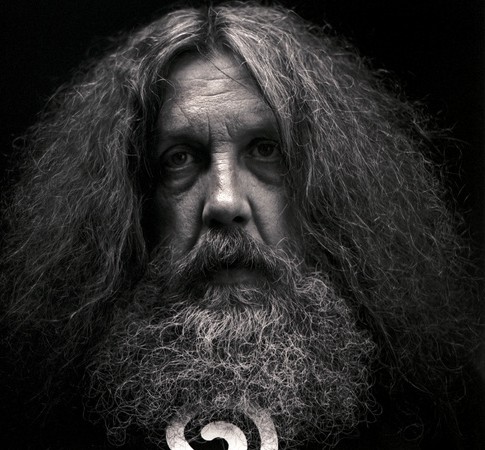
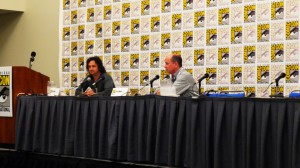

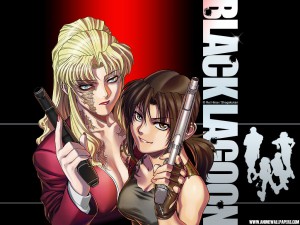
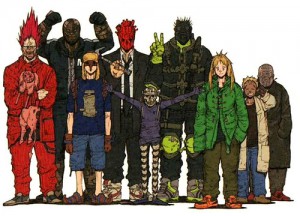
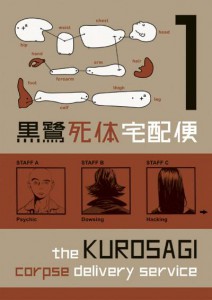
So, new and continuing manga series is with respect to English translations? I was confused till I actually went down the list.
Yes, the panel was completely about official English-translated releases. Scanlations don’t count.
Of course scanlation doesn’t count, but I really can’t figure out how editors pick which series to translate.
As I mentioned, Anime is one indicator, makes it easier to sell. But there are tons of good substantial award winning stuff that doesn’t get into the English markets. The continental europeans are luckier that way.
It is really interesting. I have been talking to Ed Chavez from Vertical and Carl Horn from Dark Horse Manga and got a lot of insights. Maybe I should just blog about it. :)